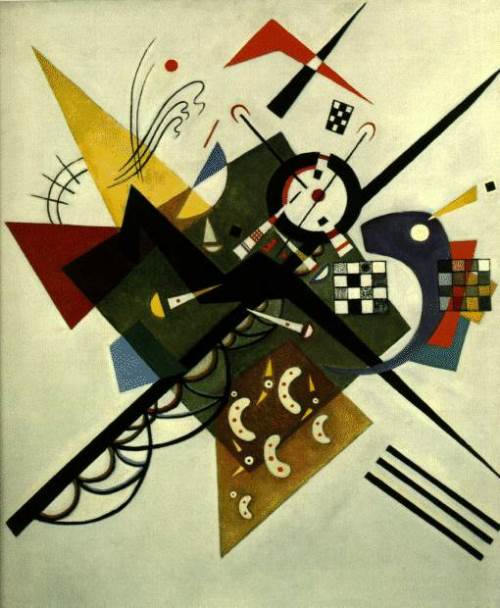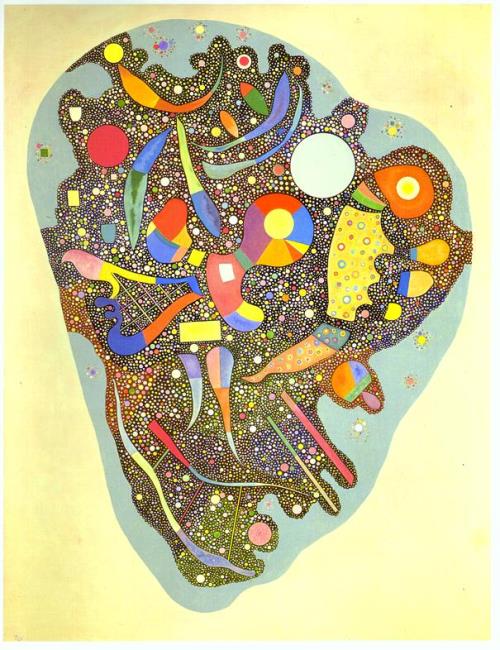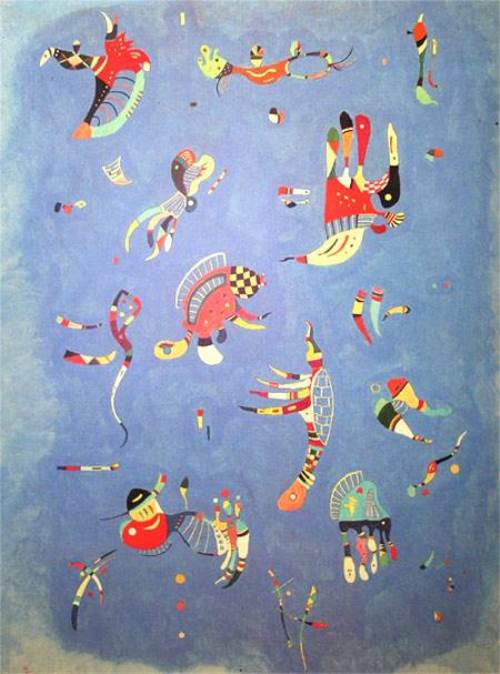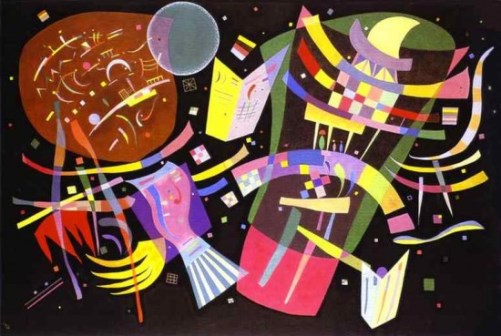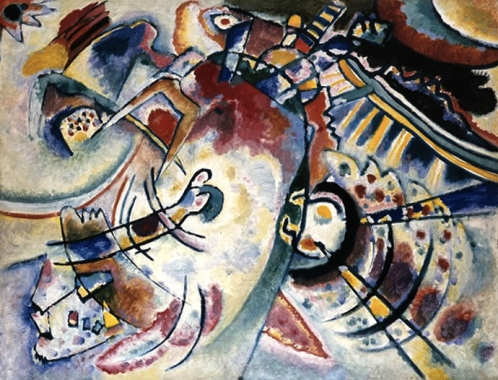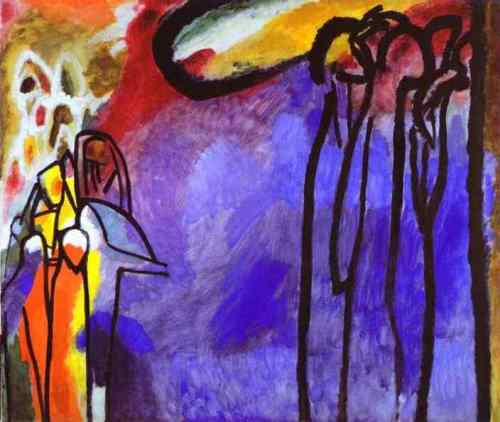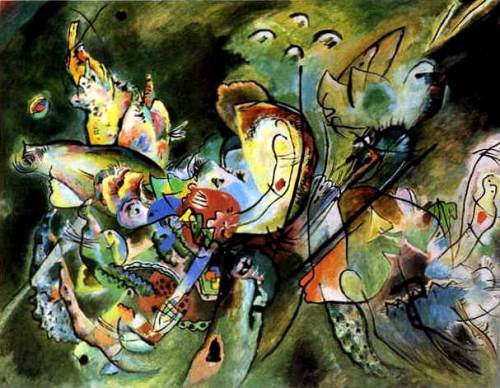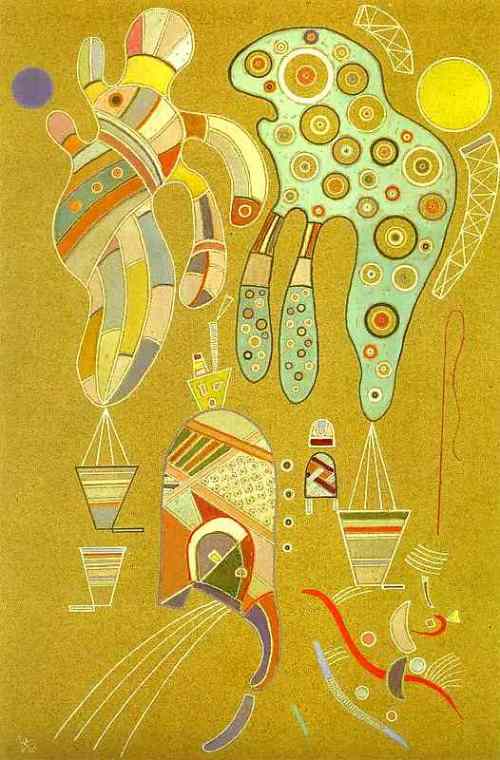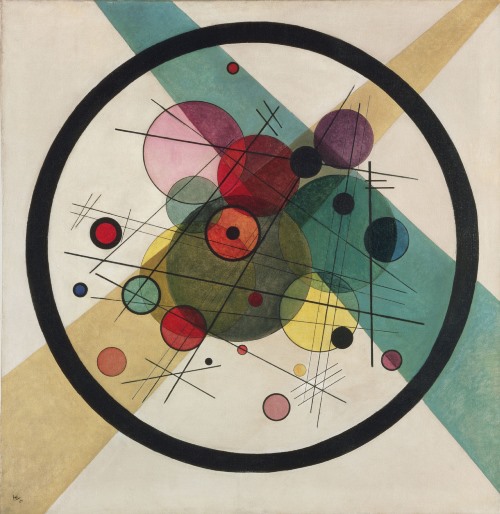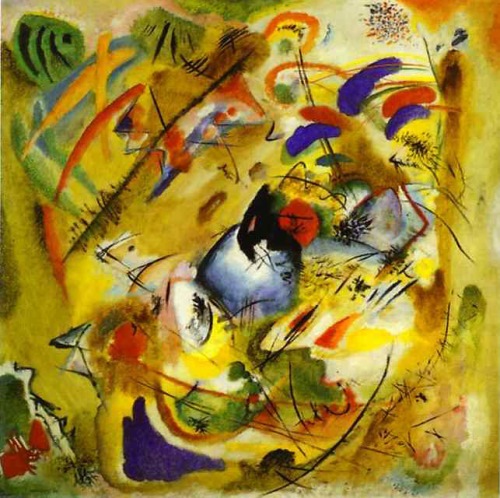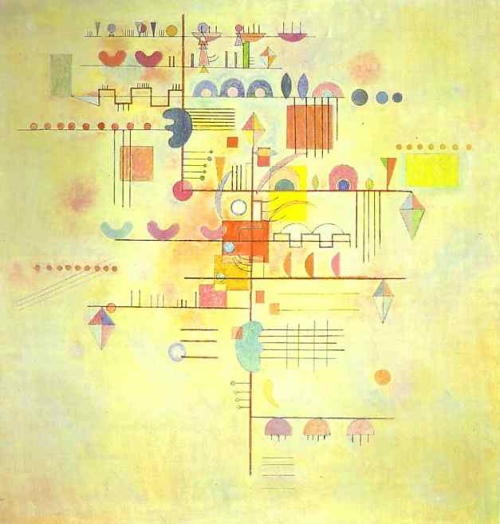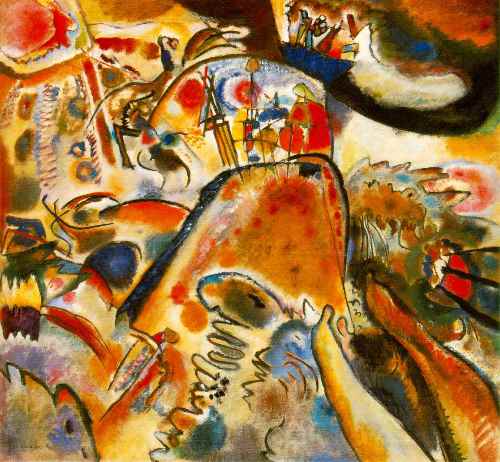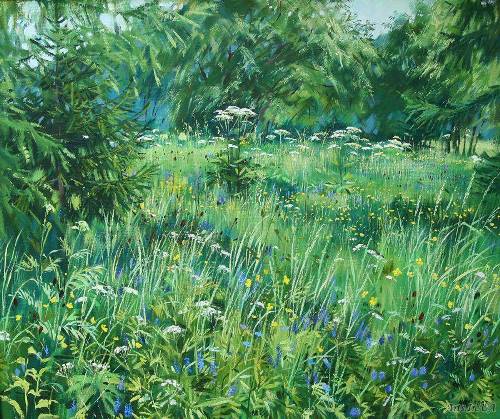Russian painter Wassily Kandinsky
Russian painter Wassily Kandinsky
Who has ever seen paintings by Wassily Kandinsky – bright, shocking, incomprehensible – can say that the artist dared to jump over the boundaries of freedom. He was understood by his contemporaries, at the beginning of the last century who saw the then unknown watercolor artist. Paintings seemed nothing but a chaotic placement of colorful spots and lines, did not depict anything, but at the same time attracted the eye, gave birth to images – unusual, mysterious. It is understood by descendants, who years later named Wassily Kandinsky one of the founders of modern abstract art. Critics of the fine arts for many years will try to unravel the phenomenon of the artist, to understand what led him to such strange images and their implementation. And they will come, in the end, to the conclusion that to understand Kandinsky is difficult. This is the same as listening to music – or imagine something exciting, beautiful, or just hear jumble of sounds.
Had Wassily Kandinsky lived now, he would probably be called a citizen of the world. He was born in Moscow on 4th December 1886 in a wealthy family. Relatives on his mother’s side came from the Baltic Germans, the father was born in Eastern Siberia, south of Lake Baikal. However, ancestors of Kandinsky’s father were not natives of the Baikal, they were expelled from the north of Russia and belonged, apparently, to the people of Mansi. Such differences in the origin of the parents affected the formation of Wassily – he perceived organically both – European and Asian cultural traditions. His parents loved to travel – financial situation allowed – so even as a child he was in Venice, Rome, Florence, in the Caucasus, the Crimea. The boy received an excellent musical education: played the piano and cello. Eventually became fond of drawing, and already in his first paintings are seen very unconventional color combinations, which he explained by the fact that each color lives its mysterious life.
At the age of twenty, a young man entered the Moscow University, where he studied economics and law. However, this interested him little, even though he received his doctorate in law. When he was offered a professorship at the University of Tartu, Estonia, Kandinsky thought to himself: now or never. He refused a tempting offer and went to Germany where he was going to learn to draw, to become a real artist.
In the student’s biography of lawyer Kandinsky there is a story, which is credited with a crucial and decisive role now by the researchers of the artist. Being a fourth-year student, he went without any official reason to the wilderness of Russia – Vologda Province. There lived ancient people Zyryans, the preserved remains of their own pagan religion. Kandinsky spent his time there, studying their traditions and customs. Of course, Vologda expedition could be regarded as a minor episode from youth of the future artist, subsequently engaged in a completely different cultural issues. It would be possible, if not the point of view of the artist, remember this “episode” of his life. He wrote that the trip to the province was one of the strongest impressions of his youth and is comparable to the effect produced on him for the first time seen Rembrandt and Monet. Another interesting fact is that the student constantly kept the diary on expedition with him. Images and ideas, inspired by the experiences of the Vologda trip, found in his works of all periods. All this suggests that the trip to the land of zyryans was something extremely important in the spiritual sense and radically affected the entire future path of Kandinsky.
So, a well-dressed man of thirty years old, looking slightly down at the world, arrives in Munich and becomes a simple student of a private art school. The capital of Bavaria became his Athens and Rome, the artistic mecca. In Wagner’s music and painted Catholic churches he gathered energy for his art and his theoretical paintings.
For many years, Kandinsky lived in Murnau, a small town at the foothills of the Alps, and the theme of the neighborhood of shining landscapes appeared in his paintings in abstract images, and motifs from the Russian popular print “Russian Beauty” and the icon “St. Vladimir” – in abstract paintings with Saint George and the feast of All Saints.
In 1911, already famous as the author of an anonymous watercolors, marked the beginning of abstract art, Kandinsky forms a community of artists “Blue Rider”, which included Franz Maier, by August Macke, Arnold Schoenberg. With the latter, done a revolution in the music at the beginning of the last century, Kandinsky has long been friends.
I was lucky enough to visit the Tretyakov Gallery of the twentieth century on the Crimean Val, just at the time when they combined exhibition of Wassily Kandinsky and Arnold Schoenberg. There was music of Schoenberg, for a moment I thought I was going crazy from such a strong impression, or my heart would break down and burst of ecstasy …
Their acquaintance began with the fact that Kandinsky attended a concert of Schoenberg and sent him an enthusiastic letter. Composer in the face of the artist met a kindred spirit in the hot period of general non-recognition. Kandinsky, for whom music has always had a special meaning, saw in the works of Arnold Schoenberg’s exactly what he sought in his paintings. They complemented and supported each other. The composer wrote: “We both are working on finding one, almost the same way.” Friendship of two talented people ended as ridiculous as successfully started. Jew Schoenberg interpreted any statement of Kandinsky as anti-Semitic and temper abruptly interrupted relationship.
However, this quarrel will happen in twelve years, and while Kandinsky, supported by friends and associates, is in the prime of creativity. In the period from 1909 to 1914 the artist has created about two hundred paintings. He united them in cycles, “improvisation”, “composition” and “impressions”, often with serial numbers and subheadings. Spots, colors, large, small, floating in an unknown space, like merge and diverge. Like lightning, zigzag lines cut through the mysterious worlds. The audience seemed immersed in the atmosphere of mystery, as to render habitable spot, trying to lure him into the bottomless space where they lived. So Kandinsky saw them, and wrote about it in his books. The artist often took up the pen to explain his plans. His philosophy is naive, of course, as a philosophy of a poet can be. And Kandinsky was a poet, not only because he wrote poetry, but because poetically perceived reality.
World War I crossed a poetic view of the world. The artist is forced to return to Russia. His like-minded friends Macke and Marc are killed at the front. No more “Blue Rider”. Kandinsky married a Russian lady deciding to plunge into the life of the Russian Empire.
Revolution of 1917, he took with inspiration, and it met him warmly – the Bolsheviks were loyal to abstract. In 1918, the artist became a professor at the Moscow Academy of Fine Arts, even published his biography. A year later, Kandinsky founded the Institute of Artistic Culture and put a lot of effort to discover museums across the country. A year later, he was a professor at Moscow University, took place his personal exhibition. Soon, however, Kandinsky with his abstraction become necessary to nobody. In 1921, the year of the “great exodus” of Russian intelligentsia, the artist went to Germany, which became a second home – seven years later, he received German citizenship, read the lectures on the theory of free art.
Russian painter Wassily Kandinsky
However, in 1933 the Nazis came to power, Kandinsky School was closed as part of a campaign against “degenerate art”, and his paintings were confiscated as an example of “degenerate art”, which has no right to exist. The artist himself was forced to emigrate to France. This country has become his third home – a few years later, he received French citizenship. The third and final – December 13, 1944, on the outskirts of Nülle-sur-Seine the great artist died.
Now his paintings are worth millions, with queues at exhibitions. A mystery of Kandinsky has not solved yet, the same as the music sound for people trying to hear something unknown, in his paintings in combination of colors and shapes, they are trying to see it. But the main secret is that to see something is really possible. How the artist makes us do it – that’s the mystery.
source of images
public art groups on social site vkontakte
subscribe.ru/group

